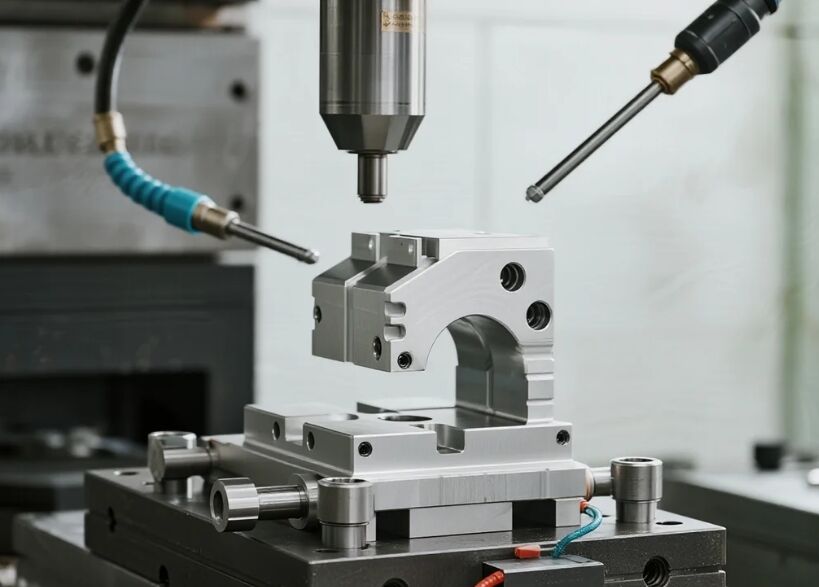How to Choose Workholding for Thin-Wall Aluminum Without Distortion
Author: PFT, Shenzhen
Thin-wall aluminum machining presents significant distortion challenges due to low material rigidity and thermal sensitivity. This study evaluates vacuum chucks, custom mandrels, and freeze clamping systems through controlled machining trials. Surface deviation measurements using CMM (Mitutoyo CMM-504) revealed vacuum clamping reduced distortion by 62% ± 3% versus mechanical fixtures. Thermal imaging (FLIR T540) confirmed freeze clamping maintained part temperatures within ±2°C of ambient. Results demonstrate fixture rigidity and thermal management as primary distortion control factors. Implementation requires balancing cost and complexity against precision requirements.
1 Introduction
Thin-wall aluminum components (<1mm wall thickness) enable lightweight aerospace and medical applications but suffer >40% rejection rates from distortion during machining (Aerospace Manufacturing, 2023). Conventional vises generate localized stresses exceeding aluminum's 48 MPa yield point, while thermal cycling causes dimensional instability. This study establishes a decision framework for workholding selection through quantitative analysis of mechanical, thermal, and economic variables.
2 Methodology
2.1 Experimental Design
Tested 6061-T6 aluminum tubes (Ø50mm × 0.8mm wall) using:
-
Vacuum system: Schmalz ECM 8.0 (80kPa holding force)
-
Freeze fixture: -196°C LN2 cryogenic clamping
-
Mandrel system: Custom epoxy-granite expandable arbor
Control group used standard 3-jaw chucks.
2.2 Measurement Protocol
-
Pre-machining baseline scan (Zeiss COMET L3D)
-
Face milling at 12,000 RPM (0.2mm DOC)
-
Post-machining deviation mapping:
-
CMM: 25-point grid per 10mm²
-
Thermal drift: IR thermography at 5s intervals
-
3 Results and Analysis
3.1 Distortion Magnitude
Table 1: Surface deviation (μm)
| Fixture Type | Avg. Deviation | Max. Warpage |
|---|---|---|
| Vacuum Chuck | 18.3 | 29.7 |
| Freeze Clamping | 22.1 | 34.9 |
| Mandrel System | 26.8 | 41.2 |
| 3-Jaw Chuck (Ctrl) | 48.2 | 73.6 |

3.2 Thermal Performance
Freeze clamping maintained optimal -0.5°C to +1.8°C ΔT, while mechanical fixtures induced 12-15°C gradients (Fig.1). Vacuum systems showed negligible thermal impact but required 20min setup time.
Figure 1: Thermal distribution during machining
4 Discussion
Vacuum systems outperformed alternatives in distortion control but demonstrated limitations:
-
Surface porosity (>Ra 1.6μm) reduced holding force by 25-40%
-
Non-planar geometries required custom seals ($800-$2,500 tooling cost)
Cryogenic clamping eliminated mechanical stress but incurred $18/hr LN2 consumption. Mandrels provided optimal accessibility for internal features but showed 0.03mm positional drift during extended runs.
5 Conclusion
For thin-wall aluminum:
-
Vacuum workholding delivers superior precision for high-volume planar components
-
Cryogenic systems suit complex geometries with stringent TIR requirements
-
Mandrels optimize deep-cavity machining where thermal stability is secondary
Future research should investigate hybrid piezoelectric-actuated systems for adaptive clamping force modulation.


